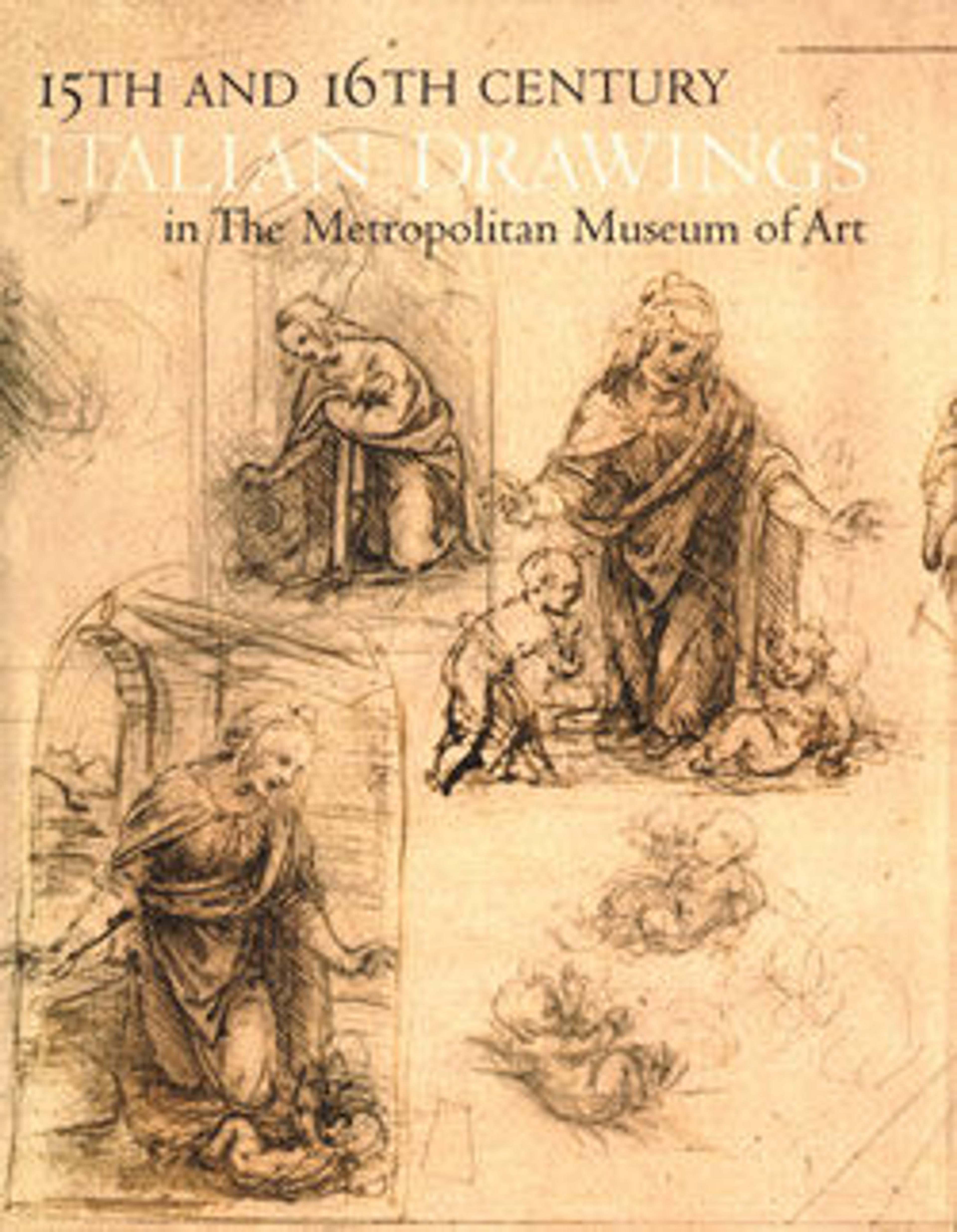The Adoration of the Magi
In this early drawing by the artist, the Holy Family appears on a raised platform: the seated Virgin holds the blessing Christ Child on her knee and the pensive Saint Joseph stands at left. The Magi are grouped at the foot of the steps leading to the platform. On the horizon appear more knights, two watching shepherds are seen on the hill at left, and further spectators are perched on the top of a building that is lightly indicated at upper right.
Fra Bartolomeo's composition was inspired by portrayals of the Adoration of the Magi made by Leonardo da Vinci and Sandro Botticelli, all characterized by a similar pyramidal grouping. The same composition was studied by the artist in a drawing in the Uffizi, Florence (inv. 452 E) and although this ambitious scene was never brought to completion as a painting, Bartolomeo's design was later reused with slight modifications by his follower Giovanni Antonio Sogliani for a panel now in Memphis (Brooks Museum of Art inv. 64.19, where it is attributed to Antonio di Donnino del Mazziere).
Fra Bartolomeo's composition was inspired by portrayals of the Adoration of the Magi made by Leonardo da Vinci and Sandro Botticelli, all characterized by a similar pyramidal grouping. The same composition was studied by the artist in a drawing in the Uffizi, Florence (inv. 452 E) and although this ambitious scene was never brought to completion as a painting, Bartolomeo's design was later reused with slight modifications by his follower Giovanni Antonio Sogliani for a panel now in Memphis (Brooks Museum of Art inv. 64.19, where it is attributed to Antonio di Donnino del Mazziere).
Artwork Details
- Title:The Adoration of the Magi
- Artist:Fra Bartolomeo (Bartolomeo di Paolo del Fattorino) (Italian, Florence 1473–1517 Florence) (?)
- Date:ca. 1500
- Medium:Pen and brown ink, over traces of black chalk
- Dimensions:10-15/16 x 9-7/16 in. (27.8 x 24.0 cm)
- Classification:Drawings
- Credit Line:Bequest of Walter C. Baker, 1971
- Object Number:1972.118.241
- Curatorial Department: Drawings and Prints
More Artwork
Research Resources
The Met provides unparalleled resources for research and welcomes an international community of students and scholars. The Met's Open Access API is where creators and researchers can connect to the The Met collection. Open Access data and public domain images are available for unrestricted commercial and noncommercial use without permission or fee.
To request images under copyright and other restrictions, please use this Image Request form.
Feedback
We continue to research and examine historical and cultural context for objects in The Met collection. If you have comments or questions about this object record, please contact us using the form below. The Museum looks forward to receiving your comments.
